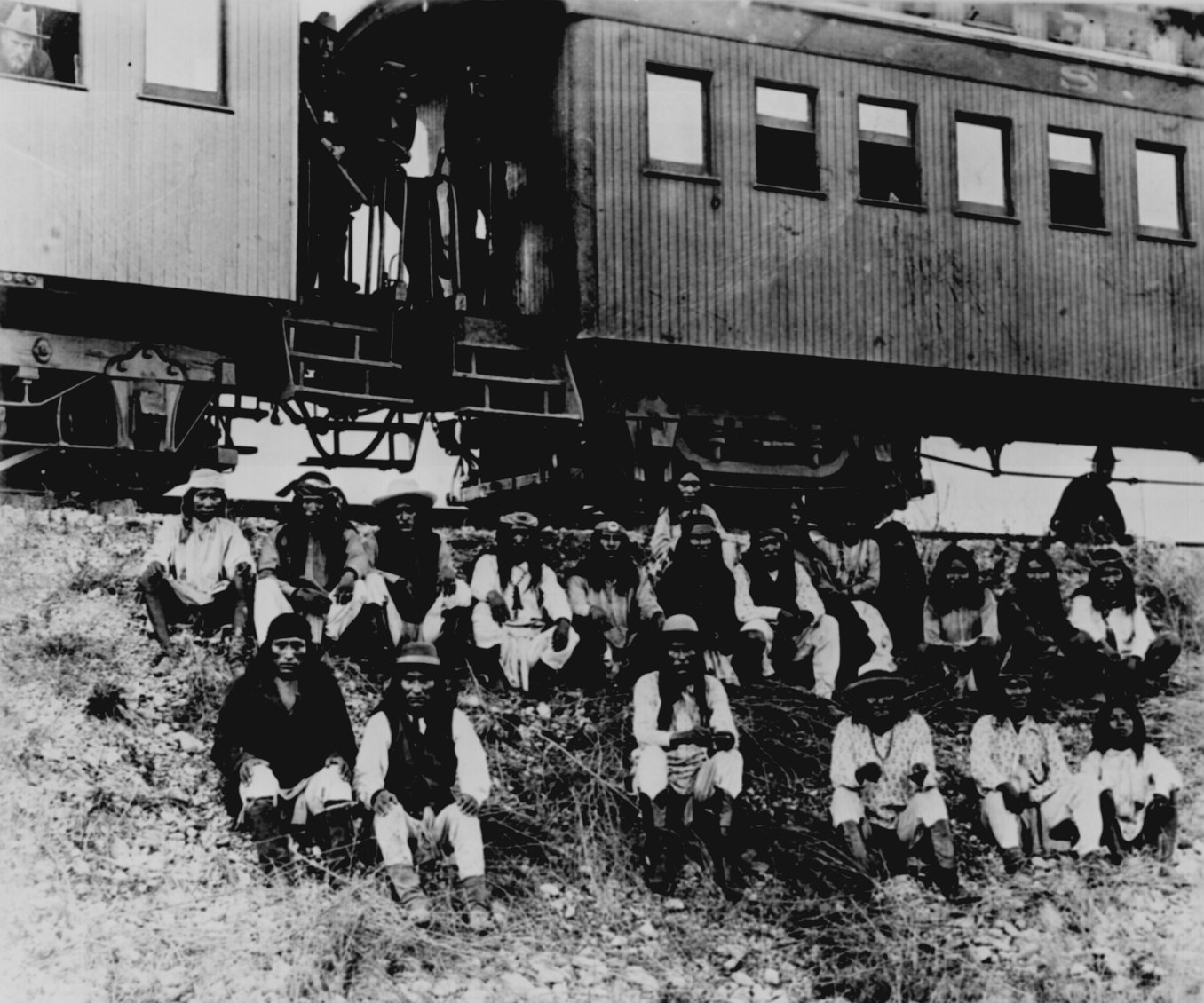
Apache prisoners of war at a rest stop Nueces River, Texas, on September 10, 1886. Among those on their way to exile in Florida are Natchez (center front) and, to the right, Geronimo and his son in matching shirts. Photo by A. J. McDonald / National Archives
Historian Marc Simmons shares the saga of Massai, an Apache warrior who was taken as a prisoner of war by the United States:
Massai arrived back on the reservation and was readmitted to his company of scouts. He was still a member in 1886, when Geronimo and his band of renegades made their final surrender to Gen. Nelson Miles. They were loaded on a rail car and shipped off to imprisonment in Florida. Shortly, orders came to San Carlos for all the loyal Apache scouts to be arrested and sent east to the very same lockup. Thus were they betrayed by the government they had long served. The first shipment of prisoners with Geronimo had traveled on the Southern Pacific by way of lower New Mexico to El Paso and on through San Antonio, Texas. Massai and the other scouts were escorted to Winslow, Ariz., where they were herded into a prison car on the Atchison, Topeka and Santa Fe Railway. As they rolled eastward across New Mexico, passing Albuquerque, Lamy and Raton, the country changed dramatically. Massai resolved to escape, but no opportunity appeared until after his car was transferred to another train in Kansas and had conveyed the Indians deep into Missouri. Somewhere west of St. Louis, Massai managed to pry open a window and leap to freedom. The escape and what followed, according to Betzinez, was so remarkable “because it illustrates the superior endurance and resourcefulness of the Apache warrior.”Get the Story:
Marc Simmons: Trail Dust: Massai’s escape part of Apache history (The Santa Fe New Mexican 12/12)
Join the Conversation
